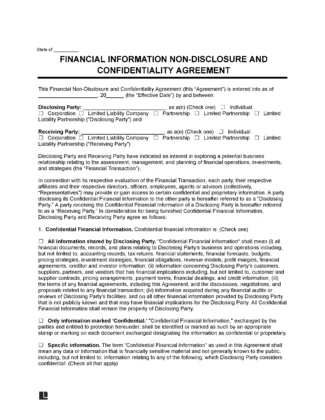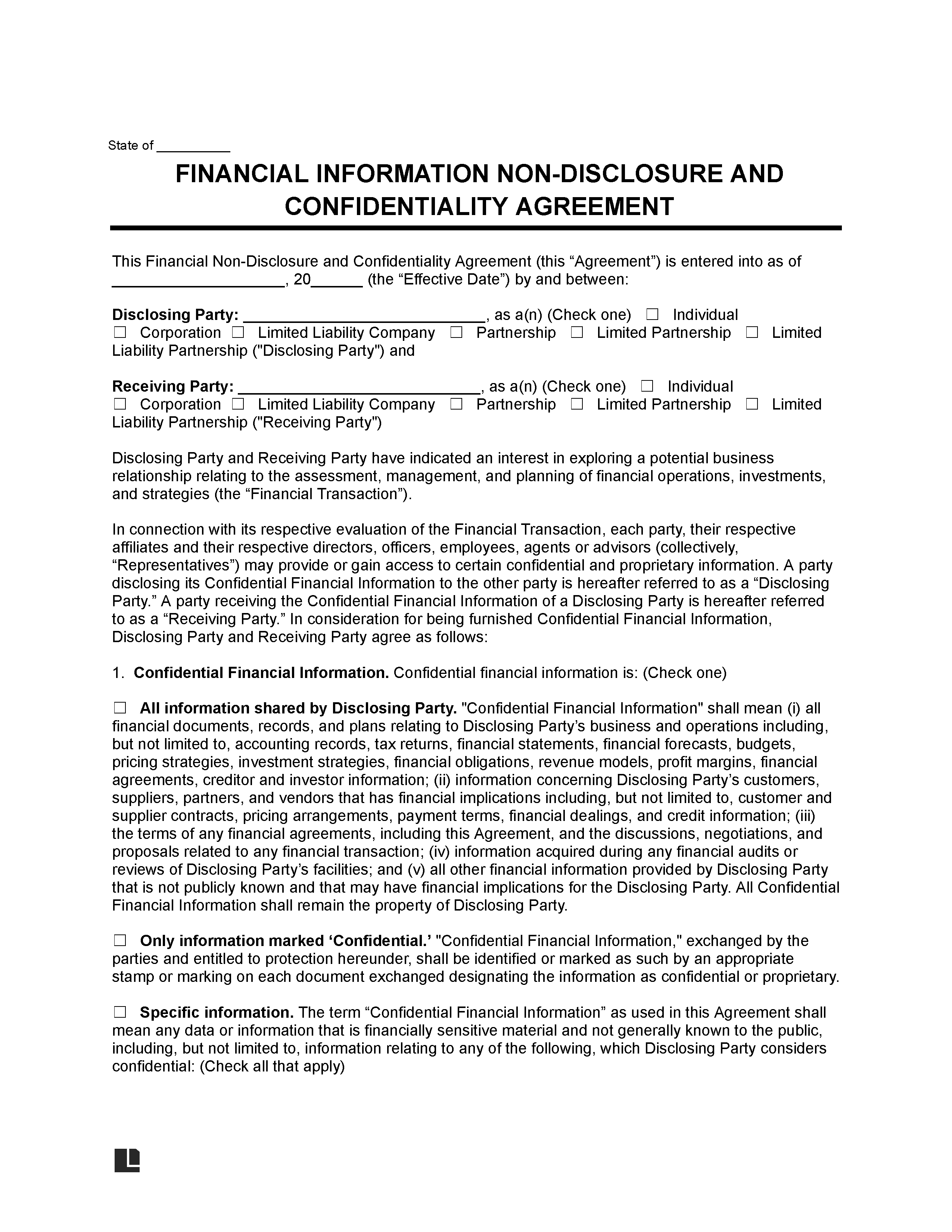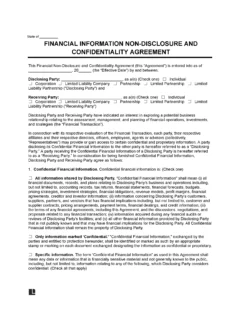

A financial information non-disclosure agreement is a legally binding document establishing a confidential relationship between parties involved in a business transaction.
The purpose is to ensure that any sensitive financial information shared during the transaction remains private and is not disclosed to unauthorized individuals or entities.
Using a financial NDA provides a legal framework to control and protect your financial information. Some of the most compelling reasons include:
A non-disclosure is particularly important in mergers and acquisitions, where parties must share detailed financial information. By signing the agreement, the buyer can access the necessary data to evaluate the target company without the risk of competitors obtaining sensitive information and potentially disrupting the deal.
Safeguarding confidential financial information is essential to maintaining a competitive advantage. By ensuring that sensitive financial data remains confidential, companies can protect their proprietary financial models, pricing strategies, marketing plans, and other valuable trade secrets from being exploited by competitors.
Financial non-disclosure agreements also play a vital role in preserving business relationships. When entering into partnerships, joint ventures, or collaborations, parties often need to share financial information to assess the venture’s feasibility.
An NDA provides reassurance that the shared financial information will be kept confidential, fostering trust and enabling open discussions without the fear of information leakage.
A well-drafted document should include several essential components to ensure its effectiveness and enforceability:
Clearly state the purpose of sharing confidential financial information. This could include evaluating a potential business transaction, conducting due diligence, or exploring partnership opportunities. The agreement should also outline the permitted uses of the information and any restrictions on its disclosure to third parties.
The document should outline the obligations of the disclosing and recipient parties. These obligations may include:
Specify the duration for which the confidential financial information will be protected. This time frame can vary depending on the information’s nature and the parties’ requirements.
Outline in the agreement any exclusions or exceptions to the confidentiality obligations. This may include information already in the public domain, information known to the recipient party before the agreement, or statements disclosed with the disclosing party’s written consent.
To enforce the non-disclosure agreement and deter potential breaches, the document should specify the remedies available in case of a violation. These may include injunctive relief, monetary damages, or other appropriate legal remedies. It is important to note that the remedies clause should be reasonable and proportionate to the potential harm caused by the breach.
In some cases, parties may include non-solicitation clauses to prevent the recipient party from soliciting employees or customers of the disclosing party. These clauses help protect the disclosing party’s business interests and prevent potential harm from misusing confidential financial information.
The document should outline the conditions under which the agreement can be terminated and the parties’ obligations upon termination. This may include returning or destroying confidential financial information received during the contract.
An effective financial information non-disclosure agreement is essential to protect your sensitive financial data. Here’s a step-by-step guide to help you create one:
Begin by clearly identifying the parties involved in the agreement. The “disclosing party” is the entity sharing the financial information, while the “receiving party” is the entity that will have access to the confidential data. Include the parties’ full legal names, addresses, and contact information.
Precisely define what constitutes confidential financial information. This can encompass financial statements, business plans, investment strategies, proprietary data, or any information you wish to protect. This section should also specify what information is excluded from the definition of confidential information.
The document should state the law and jurisdiction governing any disputes arising from the agreement. This confirms that the parties know the legal framework within which the NDA will be interpreted and enforced.
It’s essential to thoroughly review the document with all parties to ensure everyone understands their obligations. If necessary, negotiate the terms and make any revisions until all parties agree.
Sign and date the NDA and ensure each party receives a copy for their records. Some agreements may require notarization or witness signatures, so check the legal requirements in your jurisdiction.
Below, you can download a financial information non-disclosure agreement template in PDF or Word format.


Create a Financial Information Non-Disclosure Agreement Here!